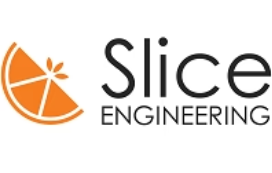Florida-based Slice Engineering and Taiwanese firm Infinity 3DP have collaborated to take desktop printing to what the company describes as a “whole new level.”
Slice Engineering believes that desktop 3D printing has conquered the market in recent times and that this trend will only continue to grow. Jimmy Liao, Infinity 3DP’s CEO said “As a designer, the appearance of Slice Engineering’s hotend immediately caught my attention. The exceptional performance and careful design are evident at first glance. After further testing, I was impressed by the ease of use of the hotend after numerous rounds of switching materials, which consistently produces durable and reliable prints. This feature greatly reduces maintenance burdens for users.”
“This partnership represents a significant enhancement to our overall 3D printing capabilities and quality, and we are excited to work with Slice Engineering,” added Liao.

What can the customers expect from this partnership?
The emphasis on R&D at Infinity 3DP results in the development of practical and effective industrial-grade desktop 3D printers. The two primary factors that confine or preclude the average customer from participating in additive manufacturing are quality and price. In the market of professional-grade 3D printers, Infinity 3DP has found a “perfect medium” by creating machines that make high-quality end products at affordable prices. Its continuous product development, testing, and refinement has enabled the firm to prosper in a highly competitive market, claims the company. Infinity 3DP created a quick and easy hotend alteration to differentiate itself from the rest of the desktop 3D printing market. Employing its One-Clip design, this novel technology enables hotends to be altered in seconds.
Infinity 3DP created this technology and is collaborating with Slice Engineering to demonstrate its capabilities with Slice Engineering’s Original Mosquito Hotend at the “Launch of US-Taiwan 3D Printing Nozzle Technology Collaboration and Exhibition of Innovative Technology” on February 17, 2023.
Both companies claim that they feel proud of designing, creating, and manufacturing high-quality products in both the United States and Taiwan. This collaboration advances both businesses’ goals and core beliefs. Slice Engineering and Infinity 3DP are committed to assisting the average customer in their 3D printing journey by offering a top-quality hotend that makes use of Infinity 3DP’s quick swap, One-Clip technology.
Dan Barousse, CEO of Slice Engineering, explained, “At Slice, we are always searching for value-added strategic partnerships, especially when shared technology creates an outcome that is greater than the sum of its parts. Our hotend technology combined with Infinity’s One-Clip geometry creates a robust, high-performance print head that optimizes accessibility for the end user.”

Benefitting from desktop 3D printing
Recently, desktop 3D printer manufacturer UltiMaker released the UltiMaker S7, the newest model in its “best-selling” S-Series line. UltiMaker’s first novel S-Series since Ultimaker and MakerBot merged last year comes with an updated build plate sensor and air filtration functionalities, resulting in greater precision than its predecessors. The S7 is claimed to have enhanced first-layer adhesion thanks to its enhanced bed leveling capability, allowing customers to print with increased confidence on its 330 x 240 x 300 mm build plate.
Previously, 3D Printing Industry reviewed Nexa3D’s novel desktop 3D printer. California-based, Nexa3D marketed its resin systems as a way of “taking existing additive manufacturing speeds from the age of ‘dial-up internet’ to ‘broadband’. Our engineering team assessed the Nexa3D XiP, the company’s recent ultrafast desktop 3D printer, to put this and additional claims to the test. Nexa3D has developed its first foray into the desktop market with the XiP, following the release of the larger NXE 400Pro and QLS 820 systems. However, the company hasn’t skimped on efficiency with the XiP, and consumers can expect to profit from its standard technical prowess, albeit at a lower price.
What does the future of 3D printing for the next ten years hold?
What engineering challenges will need to be tackled in the additive manufacturing sector in the coming decade?
To stay up to date with the latest 3D printing news, don’t forget to subscribe to the 3D Printing Industry newsletter or follow us on Twitter, or like our page on Facebook.
While you’re here, why not subscribe to our Youtube channel? Featuring discussion, debriefs, video shorts, and webinar replays.
Are you looking for a job in the additive manufacturing industry? Visit 3D Printing Jobs for a selection of roles in the industry.
Feature image shows mosquito hotend by Slice Engineering. Image via Slice Engineering.



